Podcast: Play in new window | Download
Lawn Edging and Garden Edging Ideas – Show Notes
Today, we talk about lawn edging and garden edging Ideas
Benefits of garden edging
- Reduces maintenance
- Weeding
- Trimming
- Design
- Provides clean lines
- Clear borders benefit many designs
Metal edging
- Benefits
- Durable
- Low visibility
- Cautions
- Steel can rust – may be appealing if thick steel
- Steel can degrade in salty areas
- Aluminum fairly durable
- Thin can be cut hazard
- Avoid in high traffic areas
- Can be difficult to find in stores
Stone edging
- Benefits
- Durable
- Decorative
- Cautions
- Proper underlayment required
- Weeds can become problem
Paver edging
- Benefits
- Durable
- Decorative
- Less expensive than stone
- Cautions
- Proper underlayment required
- Weeds can become problem
Mulched border
- Benefits
- Easy
- Attractive
- Affordable
- Cautions
- Requires yearly maintenance
- Can be messy in high traffic
Plastic edging
- Benefits
- Easy
- Affordable
- Versatile
- Cautions
- Can degrade over time
- Cheap options are more work
- Can be unsightly or ‘cheap’
Paths
- Creative border
- Benefits
- Functional
- effective
- Cautions
- Significant installation work
- Paths can also require maintenance
Landscape edging problems
Frost Heaving
- Not deep enough
- Improper underlayment
Weeds growing between pavers
- Proper weed barrier installation
Weeds growing underneath garden edging
- Not deep enough
Trimming issues
- Install lawn edging just above flush
Today’s Episode Show Notes: ELY.how/episode28
Links for today’s episode:
this is the easy living yards podcast
I’m you’re edgy host Ben Hale let’s jump
in and learn how to have a healthy
beautiful yard with less work so you can
enjoy more time doing what you love
[Music]what’s up and welcome to episode 28 of
the easy living yards podcast today we
will be talking about lawn edging and
garden edging ideas hey welcome to
today’s show if you’re new to the show
thank you for coming by I hope you
enjoyed this episode and other episodes
that you might discover here on the easy
living yards podcast we talk all about
how to save time in your landscape so
you can spend more time with your family
and doing the things you love so today
with lawn edging and garden edging ideas
it’s gonna be a little bit of a shorter
episodes in some of the previous ones
but this is in itself is actually a very
valuable piece of having a
low-maintenance landscape so if you’re
looking at your garden areas or if
you’re looking to design a new space
having the proper appropriate edging
that’s durable and that actually
provides a good barrier to prevent
growth and and spreading of certain
plants is very important so let’s just
jump into it today and start learning
about lawn edging and garden edging and
how this is important for us so the
benefits of garden edging are there are
a couple that I think of one is that it
reduces maintenance so when you have
edging across your garden beds or in
between your lawn and a garden bed or
something like that
what it does is it provides a barrier to
weed growth or creep of your lawn or
creep of your garden plants and it helps
just kind of keep the right things in
the right space and so the primary ways
this reduces maintenance is through the
reduction of weeding in the reduction of
trimming and of course here we might
have weed growth that comes in but also
weeding
I’m just referring to not the right
plant in the right place so if you have
some garden plants that maybe escaped
your garden into your lawn that you
would prefer not to be there or vice
versa if you have your lawn plants that
start creeping into your garden beds
while having an appropriate barrier with
a good border or edge really reduces
this need for weeding and likewise it
reduces your need for trimming if you
have the right kind of edging okay the
other benefit of garden edging or lawn
edging is that it provides some design
benefits so it actually just by having a
good edge or a good garden border you’re
providing clean lines in your design
across your yard and these clean lines
can be very crisp and a nice looking for
the right kind of designs and these
clear borders that you put in your
landscape with good garden borders it
benefits many types of designs and most
common designs that you see in yards and
landscapes so you have a reduction of
maintenance benefit as well as the
design benefit so let’s get into the
different types of edging that I prefer
and the benefits and drawbacks of each
type of edging and what might be right
for you in your yard I’m not really
gonna get into how to install edging
because there’s a lot of differences
based on the type of edging even within
these various categories that I’m
talking about
and so those specific more specific
installation topics will be highly based
on what type of edging you end up
getting for your landscape so the first
type of edging that’s highly durable is
metal edging and so the benefits for
metal edging are that it’s one durable
and to low visibility or it can be low
visibility so generally what you get
with metal edging is it’s kind of like a
thin sheet of metal that you insert
vertically into the ground at the border
of your garden or your lawn and this
metal edging border provides a very
strong endure
a barrier between your two spaces that
you’re providing an edge on and it
withstands the test of time generally
speaking and so this is a pretty thin
sheet of metal and so it is low
visibility and that is highly desired in
a lot of designs so it’s almost like a
like an invisible border now of course
when you’re close up to it you do see it
but but from a distance it’s it almost
looks like just a a self-made border if
that makes sense so some cautions with
metal edging first if you have steel
edging it can rust so if you have like a
thicker steel edging this actually may
be a an appealing look to have like
slightly patina or surface rusted edging
and so if that’s desired make sure you
have the right type of steel edging to
do that but if if not you know it might
actually degrade your edging especially
if you have a thinner metal edging like
I was mentioning previously if you have
a thicker metal edge this actually may
be desired and you get surface rusting
and that’s different than then deep
rusting and pitting so so the stuff we
want to avoid is the stuff that might
corrode over time and eventually degrade
to where you have to replace it
likewise steel edging can degrade in
salty regions so if you’re especially if
your soil has a high salt level first of
all that’s probably a it could be a
problem if you have salted soil you
might have issues with plants growing in
the first place but aside from that it
can also corrode your edges so just make
sure your soil isn’t high in salt
concentration to where it’s going to
actually degrade your edging now
alternatively aluminum edging is also
fairly common and aluminum edging is
fairly durable when it comes to
corrosion in your landscape so so this
can be a good choice the flipside is
that it’s not as strong if it is
somewhere you’re actually it’s going to
be getting a lot of direct contact with
hard surfaces or whatever impact I guess
is the the right term
so it’s it’s more flimsy basically but
it’s durable more durable to corrosion
and so this is something to considered
based on your specific need in general
the thinner metal edging it can be a cut
hazard if especially if you have
yourself or others walking around
barefoot or if you have pets that might
be stepping on this edging you just got
to be careful with the metal edging
especially the thinner stuff because it
can be an issue with cuts or just it can
be painful to step on so make sure you
can consider that also generally
speaking you want to avoid this in
high-traffic areas for some of the
previously mentioned reasons so if it’s
aluminum edging in a high-traffic area
could be prone to bending or cracking
eventually or the thinner edging also is
just it can be painful to step on and
generally speaking you just don’t want
it to be in a space where it’s actually
going to be walked on top of and so if
it’s at that the far edge of a path that
might be okay depending upon what path
you have but if it’s somewhere where
you’re going to be actually crossing it
or somebody will be crossing it on a
routine basis you might want to avoid
metal edging likewise a metal edging can
sometimes be difficult to find at
nurseries or various stores especially
your bigger box stores they generally
don’t carry the this more durable edging
and so you might have to search for it
some specialty nurseries or some large
supplier nurseries for that generally
supply like commercial use or you can
also find this stuff online so stuff to
consider there now if you find it online
shipping can be expensive for this stuff
because generally it’s sold in like
eight to ten foot lengths and so that
might be difficult but if you’re
purchasing enough of it it might be
worth it
so just something to consider there okay
let’s move on away from metal edging
which is again very nice it can be low
visibility and highly durable what about
stone edging so stone edging is the
benefits of stone edging is that it’s
it’s very durable if installed properly
and also can be very decorative at the
same time so in and of itself just the
edging itself
can be a nice accent to your garden or
to your lawn as a nice visual piece by
itself as a stone edging now some of the
cautions with stone edging is that you
got to make sure you install this stuff
properly and especially with a proper
underlayment generally speaking they
they recommend a small excavation
underneath the edging where you’re going
to install it so you dig down a few
inches below the bottom of your stone
and you install an underlayment usually
of either with a weed barrier fabric as
well as some gravel or sand as a base
for your edging and then you install
your stone edging on top of that so make
sure you you properly research whatever
you’re installing on how to properly do
it for the longest durability and also
for good weed prevention that is a good
segue into the next caution which weeds
can become a problem with stone edging
because it’s not a impenetrable barrier
like your metal edging but you have you
know gaps in between your stones if it’s
not especially if it’s not installed
properly or eventually over time you may
get weeds creeping into between the
cracks of your stones so something to
consider there okay with pavers pavers
can be very similar to stone edging but
they also offer some interesting
benefits and differences that I wanted
to break out compared to stone so like
stone edging paver edging can be highly
durable it can also be very decorative
in its own way so it generally has a
more uniform structure generally
speaking than your stone edging if you
use if you’re comparing two natural
stone the the alternative is that
generally speaking again your paver
edging is less expensive than stone and
so because stone is by itself a natural
material the larger the size you get
with your stones the higher the price
with pavers it’s something that can be
manufactured to various shapes and
sizes and it’s usually highly accessible
and you have a lot of options of size
shape color and texture with your paver
edging so the versatility of paver
edging along with the cost of it can be
something that’s very appealing okay
now like stone edging paver edging also
requires the proprietary
foundation and likewise can have the
same weed problems that we talked about
with stone edging okay
now aside from these durable borders
that I just talked about I want to talk
about two other options
the first option is actually something I
really like and that is a mulched border
now this someone is generally speaking a
little bit higher maintenance than these
other options we just talked about but
it can also in in its own right can
still be a pretty low maintenance option
and also a very low cost option so if
this is something where you just want to
have for now you want to get a good
border in that you might end up changing
in a couple years or something this is a
great option and that is a mulched
border so with a mulched border
basically what you do is you you dig out
a small shallow trench or ditch along
the edge of your garden bed and so
you’re talking about a few inches deep
and it provides a break between your
lawn and your garden or whatever two
edges you’re talking about and you fill
this this shallow ditch or trench with
mulch that you’ve acquired so you can
get you know your various types of mulch
that you would like to fill it with and
this mulch basically provides somewhat
of a barrier between the two spaces and
so this can be a kind of a quick fix
that you you will have to kind of take a
look at it won’t be the same amount of
work every year but you know after a
year you want to go back and make sure
you’re not getting any sort of weed
growth in between that mulched area you
might have to dig out certain parts and
then you refill it or top it off with
some fresh mulch because over time your
mulch will degrade and you could do this
with stone or gravel as well
if you wanted to but the reality is that
that space when you have it with stone
you’ll require the same types of work
where you’ll have to kind of slowly dig
it out to replace some of the stone and
the difficulty with stone compared to
mulch is that eventually the cavities
between the your gravel pieces or your
stone pieces will fill in with soil or
or material that can promote weed growth
and so that’s why I actually like a wood
mulch border over something like a
gravel border because over the long term
it can actually be a little bit less of
a hassle and especially a few years out
and so with this mulch the border some
of the benefits are that it’s easy it’s
attractive if if you do it properly and
it’s highly affordable now some of the
cautions like I mentioned is it can it
requires yearly maintenance and it also
can be messy in high-traffic areas so if
this is something like if you’re doing
this right on the edge of say a driveway
or a walkway where it might get some
traffic you might get some mulch
scattered across your pathways or your
driveway that you might not want so
that’s just something to consider is
this is the right border for the right
type of place and it might not be the
right border for other types of places
okay now on to the next and last option
which I would recommend and and this one
I kind of I’m a bit cautious about and
that is plastic edging so this one is
one of the most common edging options
out there and so why am i cautious about
it well first let’s talk about the
benefits of it first and then we’ll talk
about some of the potential issues so
the benefits are that it’s easy to
install generally speaking it’s
affordable and it’s also highly
versatile so you can shape it generally
speaking you can so you can get nice
curves you can also get pretty sharp
corners if you want
so it’ll it allows a lot of versatility
to whatever your needs are and that’s
very convenient in its own right it’s
also very easy to find a lot of stores
carry it so it’s something that you can
pick up quickly you can get to work on
it and and that has a huge benefit to it
as well
just the
unions of access now what are the
cautions for plastic edging well for one
plastic edging can degrade over time
especially if you’re talking somewhere
and that gets direct sunlight a lot of
times sunlight can degrade a lot of
plastics and so you’ll end up with a
brittle or weathered plastic over time
where you might get discoloring or
breakage and and that can be an issue
that you end up having to reinstall this
every couple years as it degrades
likewise
generally speaking the cheap options
that you can find there are a lot more
work based on the aforementioned reason
that it’s not very durable so you might
end up if it gets stepped on or if a
mower wheel not even blade but the mower
wheel goes over the top of it and might
crack likewise if you’re using a weed
trimmer next to it it might it might
break the plastic edging and so these
can end up too to be very unsightly
issues that you didn’t anticipate it
also can just in general it can be
unsightly or cheap-looking
if you don’t install it right or if you
don’t get a nicer type of plastic edging
so you have to determine what fits for
you does this does the benefit of access
and cost and versatility outweigh the
potential negatives and what is the
actual negative for the specific type of
plastic edging you have because there’s
all sorts of types of plastic edging
some of them come in very short lengths
some come in rolls and some of them work
at different depths and so understanding
what type of edging you’re looking at
and how it actually fits into your
landscape and both functionally and
aesthetically is very important okay so
let’s talk about some of the landscape
edging problems that you might have and
and after that we’ll kind of wrap up and
and again you know these edges are very
important actually in preventing long
term maintenance on your landscape so
that’s why this stuff is actually so
important to get the right edging for
your needs that looks right as well as
functions properly so one of the really
common problems especially with the
stone
and paver edging is frost heaving
in these in the northern parts that you
actually get frost or freezing of the
soil and if you live in the South you
might understand what I’m talking about
well when the soil freezes just like
water you know if you know ice cubes how
it expands and so if you took a milk jug
and you filled it with water and threw
it in the freezer your your milk jug
would actually kind of balloon out
somewhat may even crack if it as it
freezes and that’s because water expands
well when your soil your ground freezes
in the northern areas your your soil
does the same thing so the moisture
content in your soil actually expands
and and you get an expansion of the soil
and there’s a lot of pressure changes as
that happens and along with that
anything that’s submerged into the soil
can can be shifted or moved and and so a
lot of times that’s why you hear when
people are digging a foundation for say
a deck or a shed or even a mailbox that
you want to make sure you dig below
what’s called the frost line so the
depth that normally gets frozen you want
to dig below that so you don’t deal with
this frost heaving issue now of course
here in southern Ohio we actually have a
about a 36 inch frost line so when you
dig a foundation for something like our
shed that we built a few years ago I had
to dig down below 36 inches in order to
sink the footers for the shed and of
course when you’re doing a garden edge
with a maybe a stone border you don’t
actually want to dig down 36 inches just
to put in an appropriate underlayment
for your your stones that are just gonna
sit on top of the soil soil but what you
want to do is ensure that it has the
best foundation to prevent heaving and
so how do you do that so that’s kind of
what we talking about here is frost
heaving is when it’s very common in
stone pathways around here where over
time some of the stones will start to
shift up or down or settle or whatever
and some of that’s due to frost heaving
some of us due to just general settling
and so how do you prevent
that well one making sure you have a
deep enough foundation or underlayment
to prevent some of this issue from
happening especially using like gravel
gravel is very good at preventing the
effects of frost heaving on what’s
sitting on top of it
and also just making sure you have the
right underlayment to begin with so
gravel sand weed barrier fabric as well
just to prevent sitting and pooling of
water underneath your your edging as
well it’s very important okay
what about weeds growing between pavers
that’s another very common issue
especially if you have like a patio or a
path or just some sort of edge that’s
made with pavers how do you keep weeds
from going in the cracks well again this
this goes to back to making sure you
have a proper weed barrier underneath
and you see in the stores how they have
various grades you want to get the
highest grade possible you can afford
because I don’t mean it lasts longer in
your landscape now generally I actually
don’t really like weed barrier fabric
but in this specific scenario where
you’re you’re putting it underneath
something that you don’t intend to have
plants growing it’s it’s very important
and helpful to have and again this is
for both weed prevention as well as
ensuring proper drainage in that area as
well and so you put down your your weed
barrier installation you also want to a
lot of times they recommend to use sand
atop your your weed barrier and
underneath your pavers and this allows
you to kind of set your pavers in place
and tap them around so they can shift a
little bit and then you fill in the
cracks with sand as well well you want
to make sure that you’re using a sand
that allows water to seep through
quickly and to not hold water this will
really help a lot with preventing weeds
from getting into your space now
inevitably over time with pavers you
will get slow buildup of debris in
between the cracks and so unfortunately
one of the best things you can do is to
just try and clean those out that’s
possible so maybe with like a pressure
washer or
our stiff bristled brooms and to get as
much of your your built-up organic
material that might have kind of
accumulated in there out of there so
clean it out as best possible and this
is maybe every couple years you have to
do this and then go back and fill in
those cracks with some of that highly
porous and that can drain as quickly as
possible and prevent weed roots from
kind of getting established there and
actually germinating there because the
place gets hot and dry quickly and and
that will help preventing weed growth as
well okay what about weeds growing
underneath or below your garden edging
well the primary fix here is that to to
make sure you have a garden edging that
goes as deep as you need it to go so
what I’m talking about here is is a lot
of plants spread by underground roots or
rhizomes and and so the chute roots out
horizontally below the ground and pop up
new shoots and you want to make sure
that your edging depending upon the
plants you have growing in your garden
that you put your edging below where
these roots might potentially go and one
of the notorious perpetrators for this
is bamboo for example now with bamboo
for example you want to have a garden
edging that goes as deep as two feet to
prevent those roots from getting past
that space and into the space you don’t
want to grow so you got to make sure you
have the right depth or the right width
as a rhizome or root barrier to prevent
weeds from growing underneath your
edging now the last thing as far as an
issue that I hear about is trimming
issues so making just a your you have
this edge right but then you have to
keep going past it to keep trimming it
and especially if there’s kind of
indentations and you’re edging or
whatever you can always get these little
grass pieces that are left that are just
kind of a pain to trim around right you
want something that’s quick and easy to
maintain that’s what we’re talking about
here so how do we do that well make sure
you can install an edging that is just
barely above flush level with the ground
so something that’s great for this is
that metal edging we were talking about
first so metal edging generally you’re
installing it to where it’s maybe only
quarter to a half an inch above ground
level and that’s it and that’s effective
enough at preventing for most things of
course if you have things that spread by
grasses that’s spread by leaning over
and dropping down new roots this might
be an issue such as like your crabgrass
right but if you have say a good lawn
grass that doesn’t spread like that you
can mow right up to the edge of it
without having to drive over the top of
it and you get a nice crisp edge without
having to do weed trimming every time
you mow the grass and so that’s a great
example of having the right lawn edging
that’s just about flush you can also do
this with pavers where you install your
pavers where they’re again maybe only
about a half an inch above ground level
and you get a nice clean cut right along
it because you can run your mower deck
right up to the very edge of it without
having to go over top of it and you get
a nice cut so that’s what we’re looking
for here and with that guys that’s
pretty much a wrap for the different
types of edgings that I recommend so if
you’re looking for some lawn edging or
garden edging a lawn boarder garden
borders whatever you want to call them
these are some great options there’s a
lot of various options out there so you
got to just match what type of
durability do you want what type of
costs are you willing to spend on some
of this stuff and again sometimes it’s
worth it you’re spending a little bit
more to get something that’s going to
last you a little bit longer and and
also save you a bit more time with the
work to maintain it and so that’s very
important to consider as your you know
cost isn’t the only thing here that
we’re talking about but also our time
which is very precious and so make sure
you invest in the right thing for your
space that also fits the aesthetic
appeal that you want it also looks good
you know it makes you feel proud of your
space so that’s what we’re talking about
in selecting the right garden edging for
you and I hope you can find that and and
I’d love to hear from you if you have
any comments to share or if you had
success or problems with any edging
going over to e ly dot how that’s a ly h
o w slash episode 2:8 and drop a comment
there for everybody else let’s start a
discussion so you can learn and share
with others about what’s the best
edging for you and what you’ve either
had really good experience with or have
had negative experience with and if you
have a different opinion as well that’s
a great place to share it so going over
to e ly dot how / episode 2:8 and there
you can get in the discussion and leave
a comment and hear what other people
have to say as well now with that guys I
also want to say if you have a question
for the show you can head on over to ly
dot how slash pod that’s e ly h o w / p
OD and there you right at the top of the
page you’ll see a link a button to ask a
question and you can be featured on the
show with your questions or at least if
you’re not featured on the show I will
be able to get back to you quickly with
a quick answer and hopefully help you in
your landscaping needs and likewise if
you guys haven’t been over to iTunes to
leave a review if you like this show if
you’ve gotten some value out of it a
great way to help other people learn as
well how to save time in their landscape
to do more of what they love you can
head on over to iTunes and leave a
review so with all these things I’m
talking about just check out the show
notes or you can go on over to ily dot
how / episode 2:8 and all the links are
right there to leave a review to ask a
question and potentially get featured on
the show so thanks for tuning in guys
and make sure you live with passion and
make tomorrow better than today
[Music]


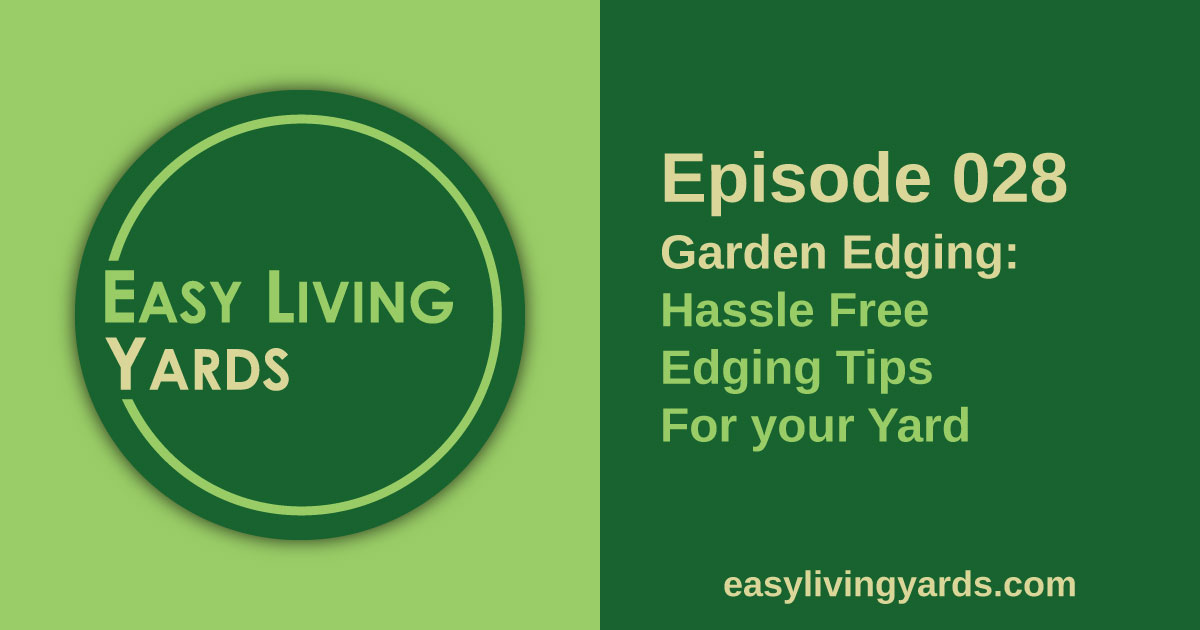
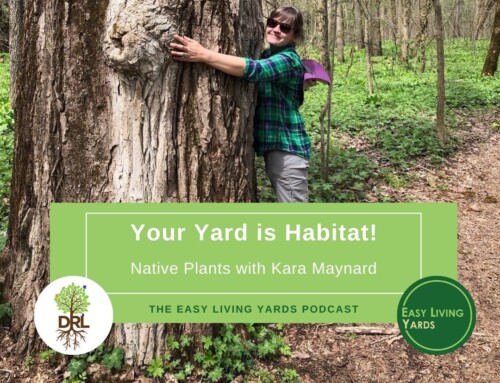

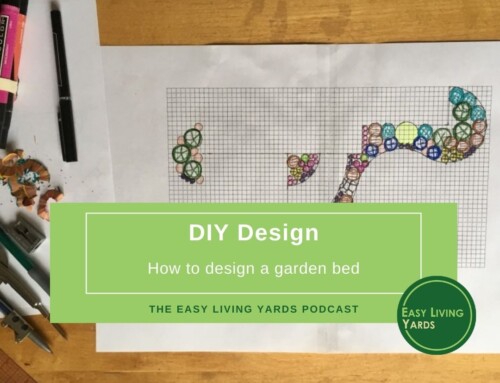

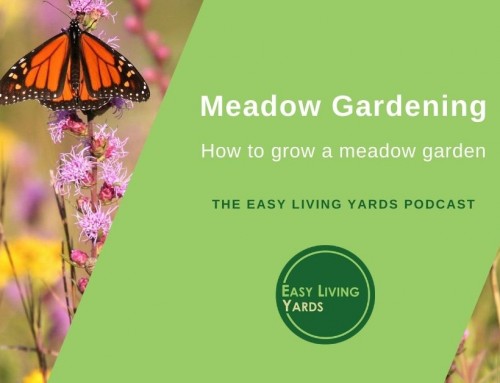
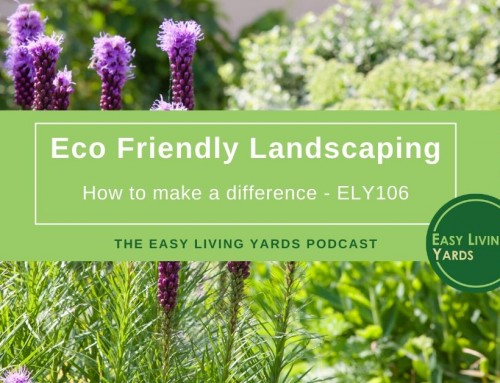
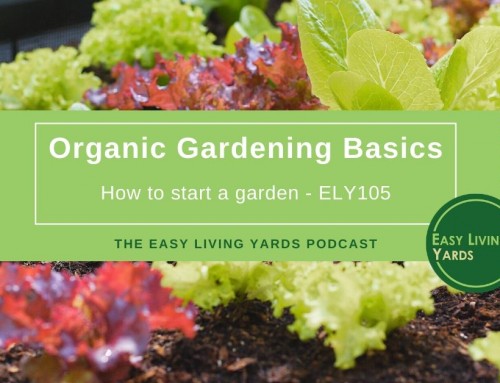
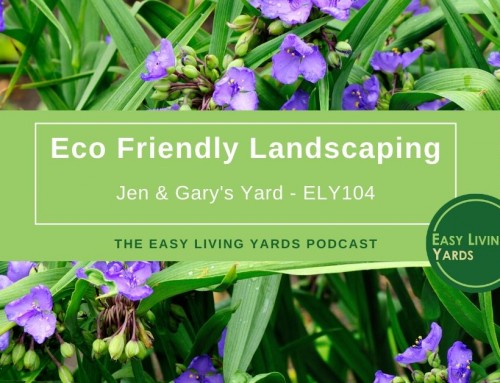
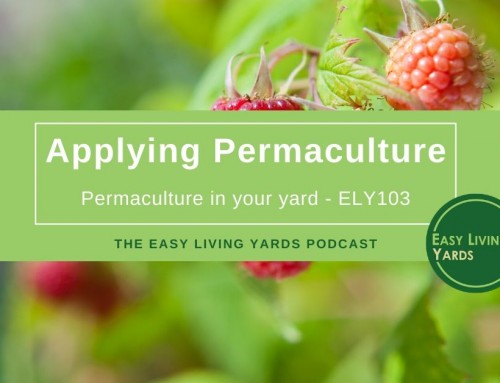
Leave A Comment